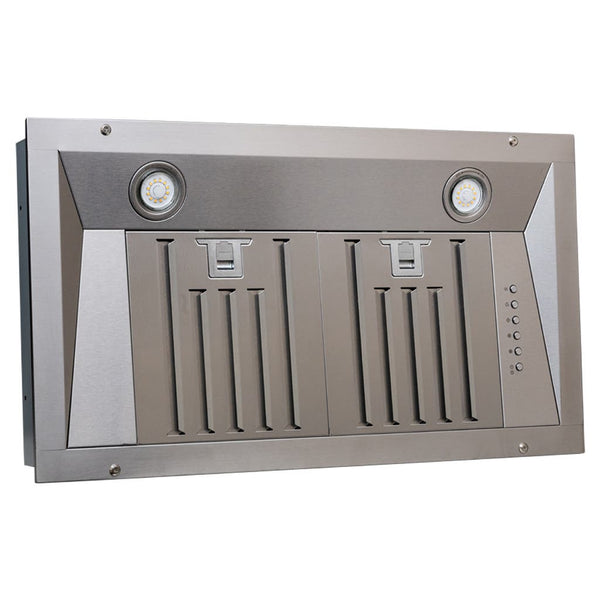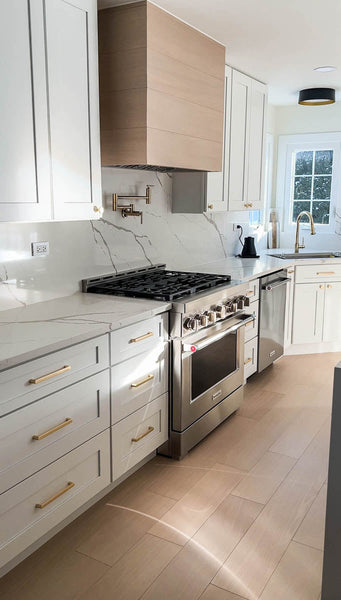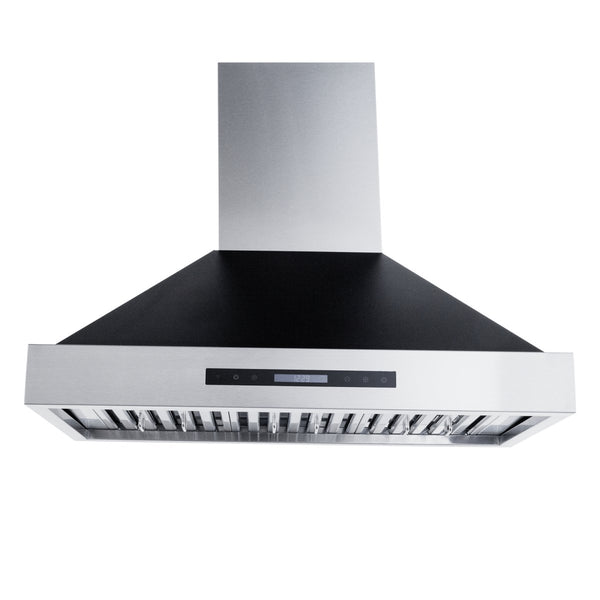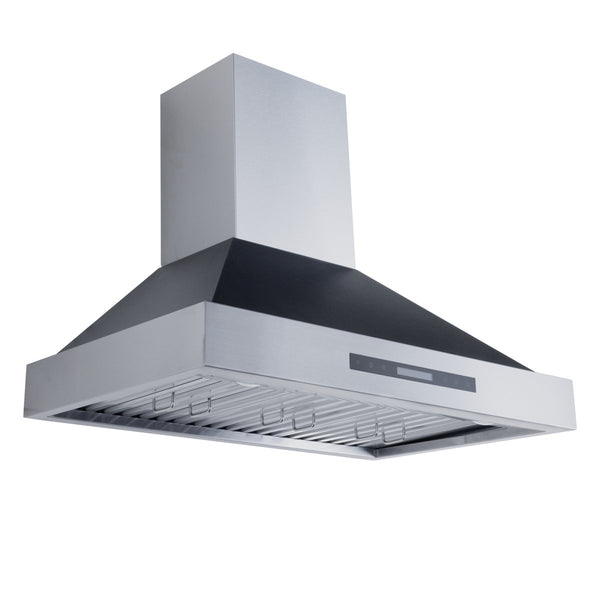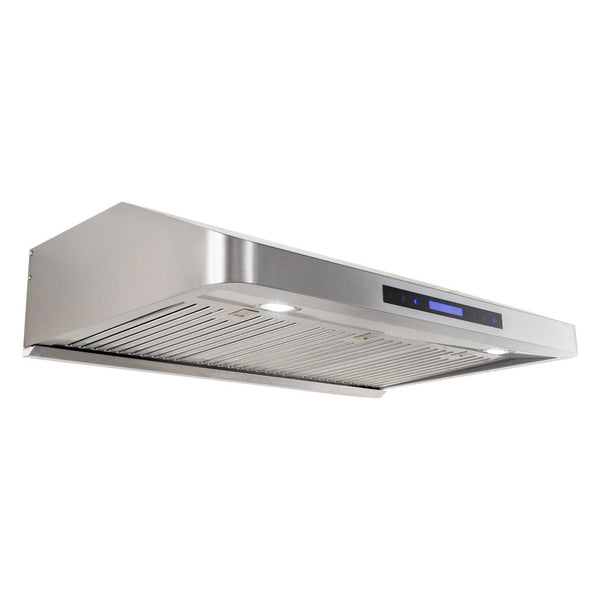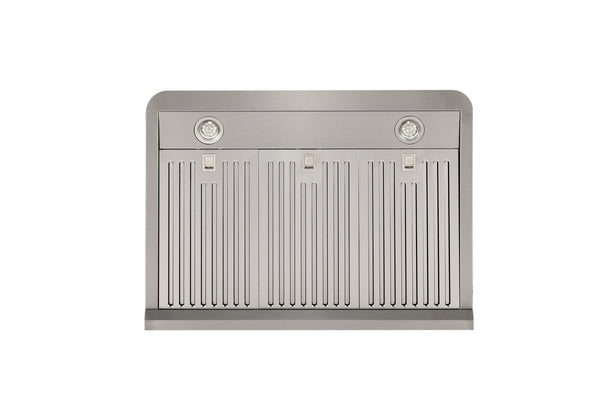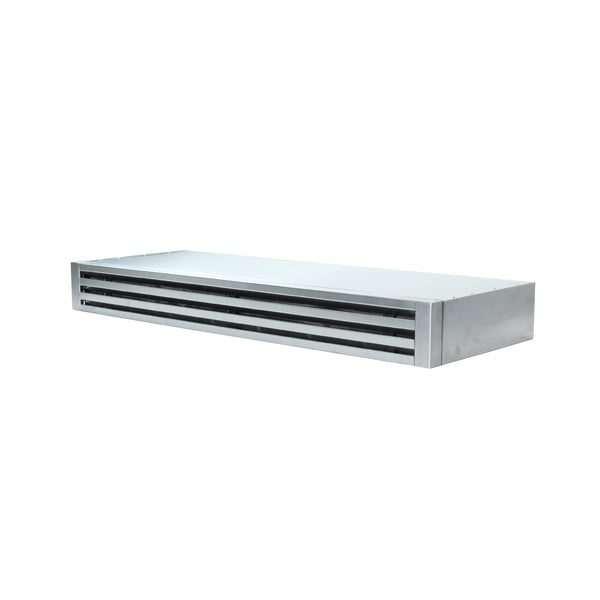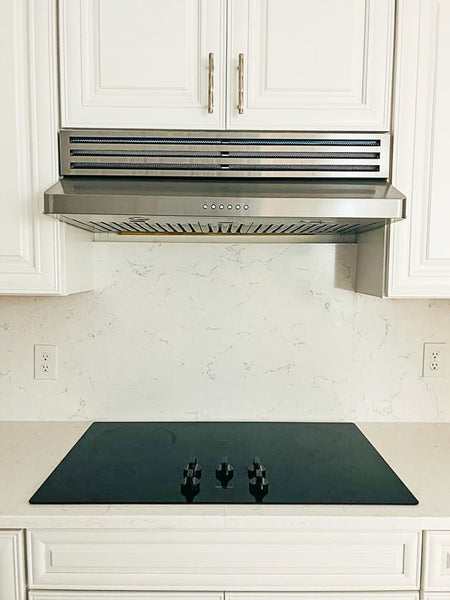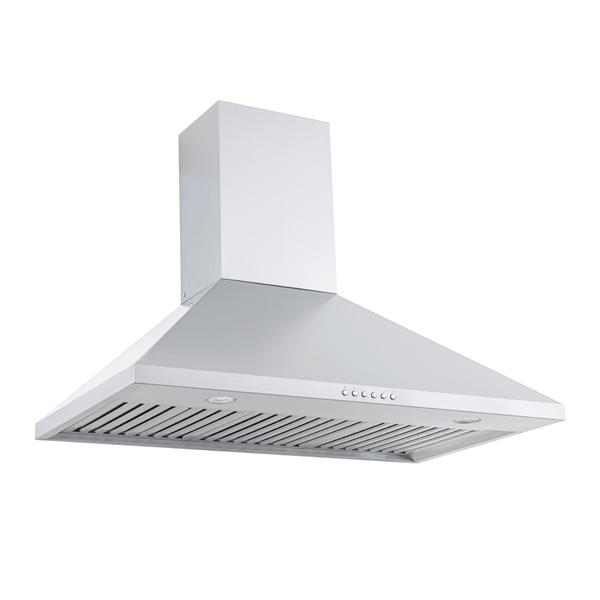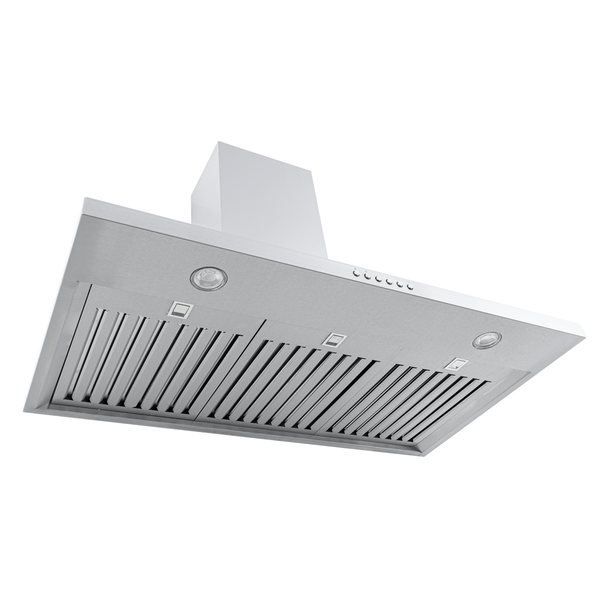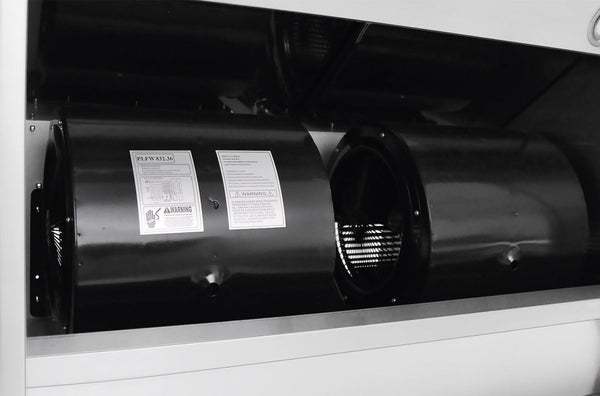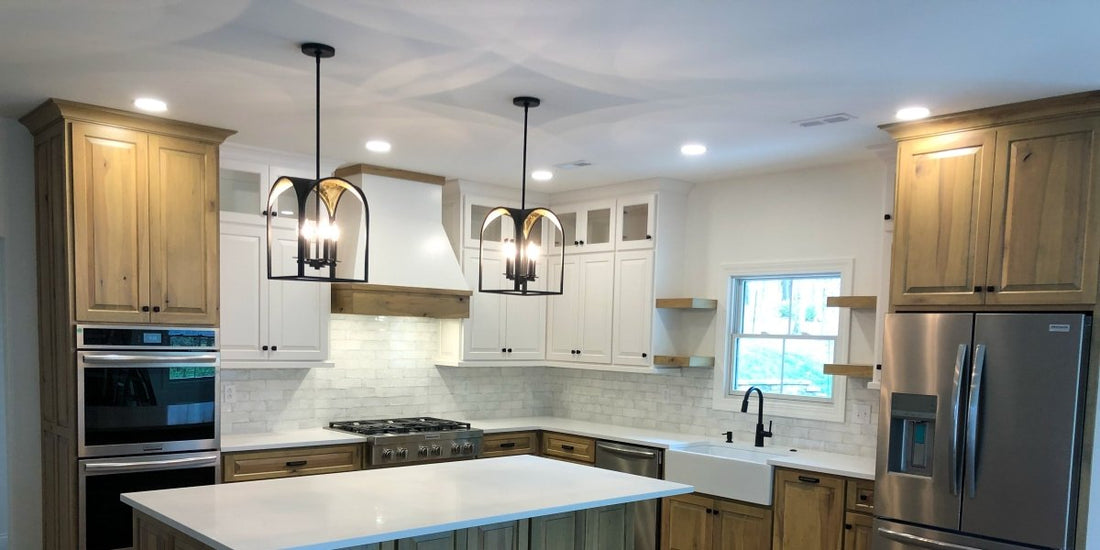Table of Contents
Your range hood does more than just remove smoke - it's a complex system of components working together to keep your kitchen fresh. Whether you're shopping for a new hood or troubleshooting your current one, understanding the basic parts will help you make informed decisions. Here is a quick video explaining some of the parts:
Quick Overview: The 7 Essential Range Hood Components
- Hood Canopy - The visible shell that captures cooking vapors
- Blower (Fan Motor) - The powerhouse that moves air out
- Filters - Trap grease and odors before they spread
- Control Panel - Your command center for fan speed and lights
- Lights - Illuminate your cooking surface
- Ductwork/Chimney - Channels air outside (in vented models)
- Electrical Components - Keep everything running smoothly

1. Hood Canopy: Your First Line of Defense
The canopy is the large, visible part hanging above your stove. Think of it as a funnel that captures rising smoke and fumes.
Key Features:
- Shapes: Rectangular or curved
- Materials: Stainless steel
- Size matters: Should overlap your cooktop by 6 inches for best capture
PRO TIP: A canopy that covers all back burners and half of front burners works best.

2. The Blower: The Heart of Your Hood
The blower is what makes your range hood actually work. It's measured in CFM (Cubic Feet per Minute) - higher CFM means more air movement.
Types of Blowers:
- Local: Built into the hood
- Inline: Installed in the ductwork between hood and outside. Check out our inline blower here!
Note: You can only add a local or inline to our HE series & the ProV.

3. Filters: Your Grease-Fighting Arsenal
Filters keep grease from coating your ducts and kitchen surfaces. Here's what you need to know:
| Filter Type | Best For | Maintenance | Pros | Cons |
|---|---|---|---|---|
| Mesh | Budget hoods | Clean monthly | Affordable | Clogs easily |
| Baffle | Heavy cooking | Clean monthly | Very effective | Can be hard to clean (only if not regularly maintained) |
| Charcoal | Ductless hoods | Replace every 3–6 months | Removes odors | Can't be cleaned |

4. Control Panel: Command Central
Located on the front or underside of the hood, the control panel lets you:
- Adjust fan speed (usually 3-4 settings)
- Turn lights on/off
- Timers
Modern Features:
- Touch controls
- LED sensor
- Rotary knob

5. Lighting: Brighten Your Cooking
Good lighting isn't just convenient - it's a safety feature. Here are your options:
- LED: Energy-efficient, long-lasting, cool to touch
- Halogen: Very bright but runs hot
PRO TIP: LED lights are worth the investment - they last for years and save energy.

6. Ductwork/Chimney: The Exhaust Highway
In ducted systems, the chimney hides the ductwork that carries air outside. Key points:
- Straight runs work better than multiple bends
- Proper sizing is crucial (usually 6–10 inches diameter)
- Contains a damper to prevent backdrafts
Ductless Note: If you have a recirculating hood, there's no external ductwork - just charcoal filters to clean the air.

7. Hidden Heroes: Electrical Components
Behind the scenes, these parts keep everything running:
- Wiring Harness: The "nervous system" - a network of wires connecting all electrical parts to the circuit board
- Circuit Board: The "brain" that receives signals from the control panel and directs power to fan and lights
- Capacitor: Provides the electrical "kick" to start the blower motor and keep it running smoothly
Warning Signs:
- Fan buzzing but not spinning? Likely a bad capacitor
- Nothing works? Could be the circuit board
- Intermittent failures? Check wiring harness connections

8. High-Efficiency Blower Box (Premium Feature)
Our HE and ProV series high-end hoods feature specially designed energy efficient local blowers:
What It Does:
- Variable Control gives user 100% control over cooking environment
- Eliminates energy waste while maximizing CFM output
Benefits:
- Quieter operation
- Consistent airflow
- Higher CFM with less noise
Best For: Heavy-duty cooking, professional-style ranges, or when quiet operation is essential
Maintenance Tips for Longevity
- Clean grease filters monthly
- Replace charcoal filters every 3–6 months (ductless only)
- Wipe down the canopy weekly to prevent grease buildup
- Check lights and replace as needed
- Listen for unusual sounds - they often signal problems
The Bottom Line
Your range hood is more than just a kitchen appliance - it's a system of carefully designed components working together. Understanding these parts helps you:
- Choose the right hood for your needs
- Maintain it properly
- Troubleshoot basic issues
- Know when to call a professional
Remember: A well-maintained range hood not only keeps your kitchen cleaner but also protects your home from grease buildup and potential fire hazards.
Need more help? Check your owner's manual for model-specific information, consult a professional for complex repairs, or give our customer service team a call.
